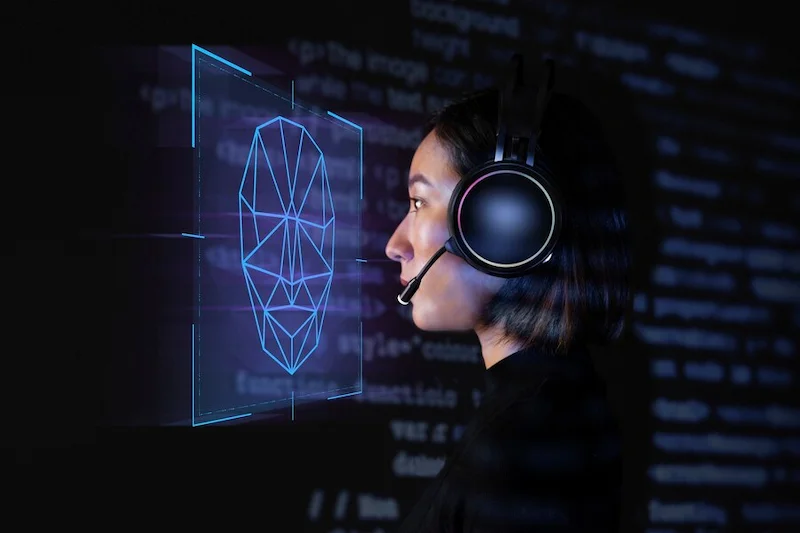Table of Contents
Speech recognition technology has made remarkable strides in recent years, revolutionizing how we interact with machines. From voice-activated assistants like Siri and Alexa to advanced transcription services, this technology is becoming increasingly integrated into our daily lives. Powered by advancements in artificial intelligence (AI), speech recognition systems have grown more accurate and responsive, offering businesses and individuals new ways to communicate and enhance productivity. Here’s a deep dive into the power of speech recognition technology and its many applications.
How Speech Recognition Technology Works
Fundamentally, speech recognition technology transforms spoken words into written text. It analyzes sound waves, breaks them down into phonemes (the smallest units of sound), and uses algorithms to interpret the meaning of the spoken words. Early systems relied heavily on programmed rules and could only recognize specific vocabulary with limited accuracy. However, today’s technology, powered by AI, is far more sophisticated.
The integration of AI with speech recognition is opening up new possibilities. In the current digital landscape, AI speech recognition systems use machine learning and natural language processing (NLP) to improve their understanding of human language. Instead of following rigid rules, these systems learn from vast datasets of spoken language, allowing them to recognize a wider variety of accents, dialects, and even colloquial speech. As the system processes more data, it becomes more accurate and efficient, making it possible for speech recognition to work in real time, even in noisy environments.
The Rise of Voice Assistants
One of the most prominent applications of speech recognition technology is in voice assistants. Virtual assistants like Amazon’s Alexa, Apple’s Siri, and Google Assistant have made voice interaction a common part of our daily routines. From setting reminders to answering questions and controlling smart home devices, voice assistants have changed how we interact with technology.
The use of AI-powered speech recognition in these devices has allowed for natural and conversational interactions, enabling users to speak commands rather than type or navigate complex menus. This hands-free convenience is especially valuable in situations where multitasking is necessary—such as driving, cooking, or exercising. As voice assistants continue to improve, they are becoming more personalized and intuitive, adapting to individual user preferences and offering customized responses.
Speech Recognition in Business
Speech recognition technology is also transforming the business world. In industries where documentation is critical, such as healthcare, legal, and finance, speech-to-text systems are speeding up workflows and reducing manual transcription errors. Doctors can now dictate patient notes, lawyers can create briefs, and financial professionals can draft reports—all using speech recognition software that accurately transcribes their words into text.
In customer service, speech recognition has revolutionized call centers. Interactive voice response (IVR) systems powered by speech recognition can route calls, provide customer support, and handle inquiries without human intervention. This reduces wait times and improves customer satisfaction. Additionally, many businesses are now leveraging AI to analyze call data, extracting insights from customer interactions to enhance service quality.
Accessibility and Inclusivity
One of the most powerful impacts of speech recognition technology is its ability to make technology more accessible. For individuals with disabilities, speech recognition offers an alternative way to interact with devices. People with limited mobility can control computers and smartphones using voice commands, making technology more inclusive.
In education, speech recognition tools are helping students with learning disabilities. For example, students with dyslexia can use speech-to-text systems to dictate essays and homework, bypassing the challenges of writing or typing. The ability to turn spoken words into text also benefits individuals who are deaf or hard of hearing, as transcription services can convert speech into readable captions in real time, making communication more seamless.
The Role of AI in Speech Recognition
Artificial intelligence plays a critical role in the advancement of speech recognition technology. Traditional speech recognition systems were limited by their inability to adapt to variations in language, accents, and background noise. However, AI-supported speech recognition systems are trained on massive datasets, allowing them to understand context, nuances, and even different languages.
Machine learning algorithms continually improve the system’s ability to recognize speech by learning from the data they process. For instance, AI can learn from the data patterns of how a person speaks, improving accuracy over time. These systems are also capable of self-correcting, meaning they can adjust their responses based on user feedback, further refining their ability to recognize speech accurately.
In addition to improving accuracy, speech recognition systems supported by AI are now equipped with natural language understanding (NLU) capabilities. This enables them to interpret the intent behind the words, rather than simply converting speech to text. For example, if a user asks a voice assistant, “What’s the weather like?” The system recognizes that the user is asking for weather updates and delivers the relevant information, even without the precise phrase “weather forecast” being mentioned.
Applications in Education and Learning
Speech recognition is also reshaping education by providing new tools for students and teachers alike. Voice-activated learning apps can help students practice pronunciation, expand their vocabulary, and even learn new languages. For teachers, speech recognition systems can simplify grading by allowing them to dictate feedback on student work or take notes during lectures without having to write everything manually.
Moreover, speech recognition technology can be a game-changer for distance learning. As online education becomes more prevalent, the ability to use voice commands and dictate assignments provides students with greater flexibility. AI-powered transcription services can turn lectures and webinars into searchable text, making it easier for students to review material and study at their own pace.
Enhancing Security with Voice Recognition
In addition to its convenience, speech recognition technology is being used to improve security. Voice biometrics—an extension of speech recognition—can authenticate users based on the unique characteristics of their voice. Just like fingerprints, each person’s voice is distinct, and this technology analyzes specific vocal traits, such as pitch, tone, and rhythm, to verify identity.
Voice recognition is now being used for secure logins in banking apps, password recovery systems, and smart home devices. This provides an extra layer of security, reducing the risk of fraud or unauthorized access. As voice authentication technology continues to develop, it’s likely to play an even more significant role in cybersecurity.
The Future of Speech Recognition

The role of AI in speech recognition looks promising in the future, with new developments likely to improve its capabilities further. As AI systems become more advanced, we can expect more seamless voice interactions, where machines understand not just what we say but also the context, emotion, and intent behind our words.
Moreover, speech recognition technology is likely to become even more integrated into various industries, from healthcare to retail, enhancing efficiency and providing personalized experiences for consumers. In the near future, we may see speech recognition systems that can handle even more complex tasks, such as conducting full conversations or providing real-time translations.
Speech recognition technology has already revolutionized the way we communicate with machines, and its potential continues to grow. Whether through voice assistants, business applications, or accessibility features, AI-powered speech recognition is opening doors to a more efficient and inclusive world. As technology advances, its impact will only deepen, making our interactions with technology more natural, intuitive, and powerful.
Want to explore something different? 7 Practical Reasons Why You Should Invest in a New Roof for Your Home

